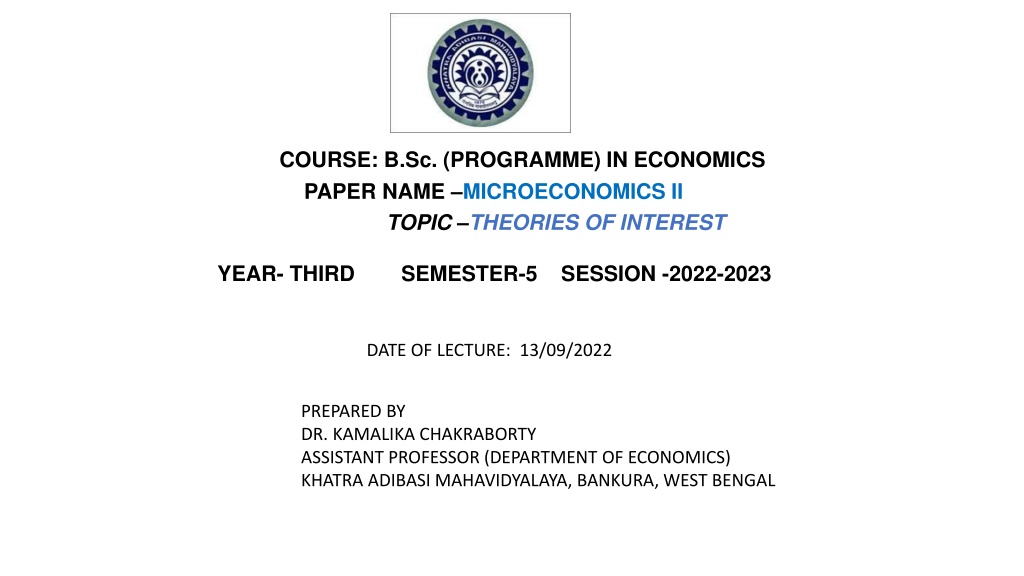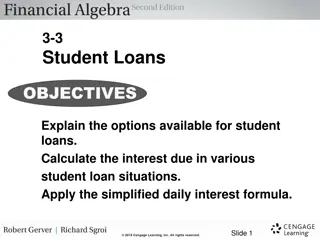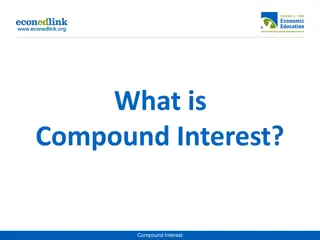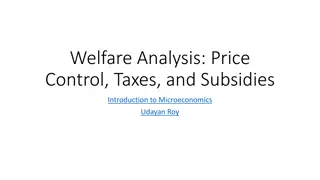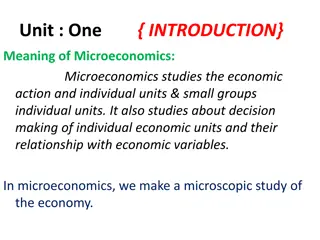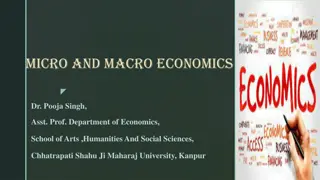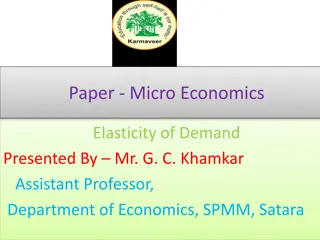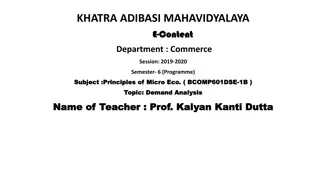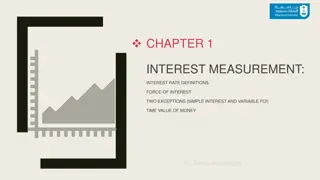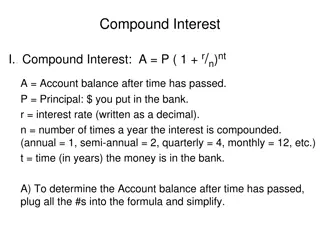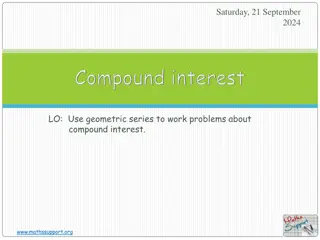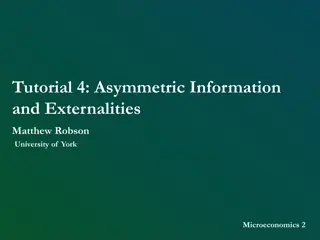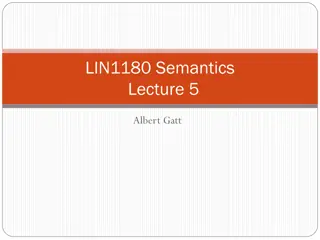Theories of Interest in Microeconomics II
Explore various theories of interest in economics, including the Classical Theory, Liquidity Preference Theory by Keynes, Productivity Theory, Abstinence Theory, Time-Preference Theory, Fisher's Time Preference Theory, and the Loanable Fund Theory. These theories offer different perspectives on the determination of interest rates based on factors such as supply and demand of capital, productivity, liquidity preferences, and time preferences.
Download Presentation

Please find below an Image/Link to download the presentation.
The content on the website is provided AS IS for your information and personal use only. It may not be sold, licensed, or shared on other websites without obtaining consent from the author. Download presentation by click this link. If you encounter any issues during the download, it is possible that the publisher has removed the file from their server.
E N D
Presentation Transcript
COURSE: B.Sc. (PROGRAMME) IN ECONOMICS PAPER NAME MICROECONOMICS II TOPIC THEORIES OF INTEREST YEAR- THIRD SEMESTER-5 SESSION -2022-2023 DATE OF LECTURE: 13/09/2022 PREPARED BY DR. KAMALIKA CHAKRABORTY ASSISTANT PROFESSOR (DEPARTMENT OF ECONOMICS) KHATRA ADIBASI MAHAVIDYALAYA, BANKURA, WEST BENGAL
THEORIES OF INTEREST Classical Theory of Interest or Demand and Supply of Capital Theory of Interest: This theory was expounded by eminent economists like Prof. Pigou, Prof.Marshall, Walras, Knight etc. According to classical view have said that the rate ofinterest is determined by the supply and demand of capital. Therefore, those economists who hold classical view have said that the rate ofinterest is determined by the supply and demand of capital.
Liquidity Preference Theory of Interest by Keynes: According to Keynes, Interest is purely a monetary phenomenon. It is the reward of not hoarding but the reward for parting with liquidity for the specified period.In Liquidity Preference Theory interest is determined by the supply of and demand for money. In the eyes of Keynes "Interest is the reward for parting with liquidity for a specific period. The desire for liquidity arises because of three motives: (i) The transaction motive; (ii) The precautionary motive; and (iii) The speculative motive.
Productivity Theory of Interest: This theory was propounded by J.B. Clark and F.H. Knight.According to this theory, interest is the reward paid to capital due to its productivity. Abstinence Theory of Interest: This theory was expounded in 18th century by an eminent economist N. W. Senior. According to this theory interest is the reward for abstinence from present consumption. The Time- Preference Theory : John Rae expounded this theory in the year 1834. Further, Bohm Bawerkdeveloped this theory in an elaborate way. Bohm-Bawerk, an Austrian economist,is the main exponent of this theory which seeks to explain interest on the basis oftime-preference. Fisher s Time Preference Theory:Prof. Fisher s Time Preference Theory is the modified theory of Bohm-Bawerk. Interest rate depends on time-preference or an eagerness to spend income on present consumption.
The Loanable Fund Theory of Interest: The Neo-classical or the Loanable Fund Theory was expounded by the famousSwedish economist Knot Wick-sell. Further, this theory was elaborated by Ohlin,Roberson, Pigou and other new-classical economists. This theory is an attempt toimprove upon the classical theory of Interest. According to this theory, the rate ofinterest is the price of credit which is determined by the demand and supply forloanable funds.
